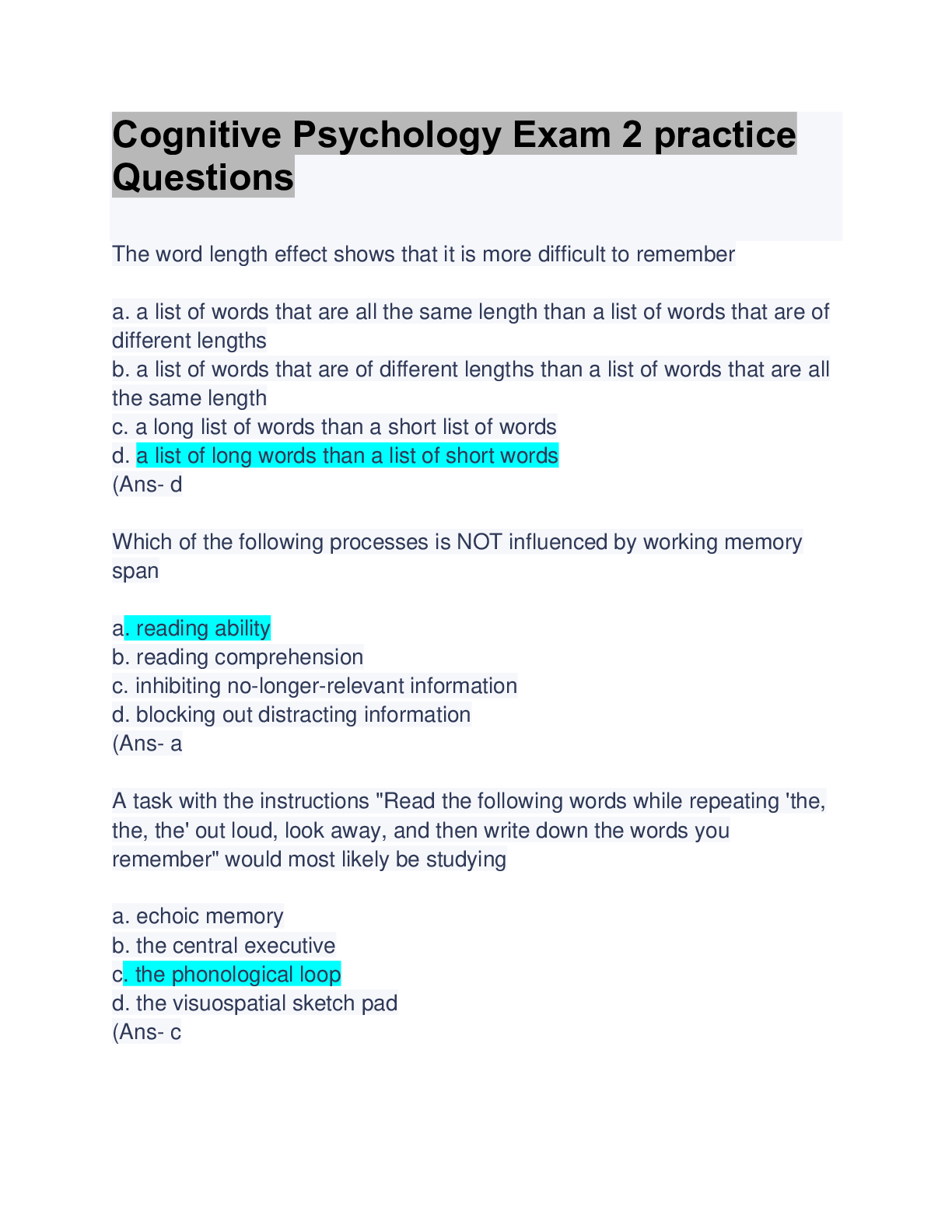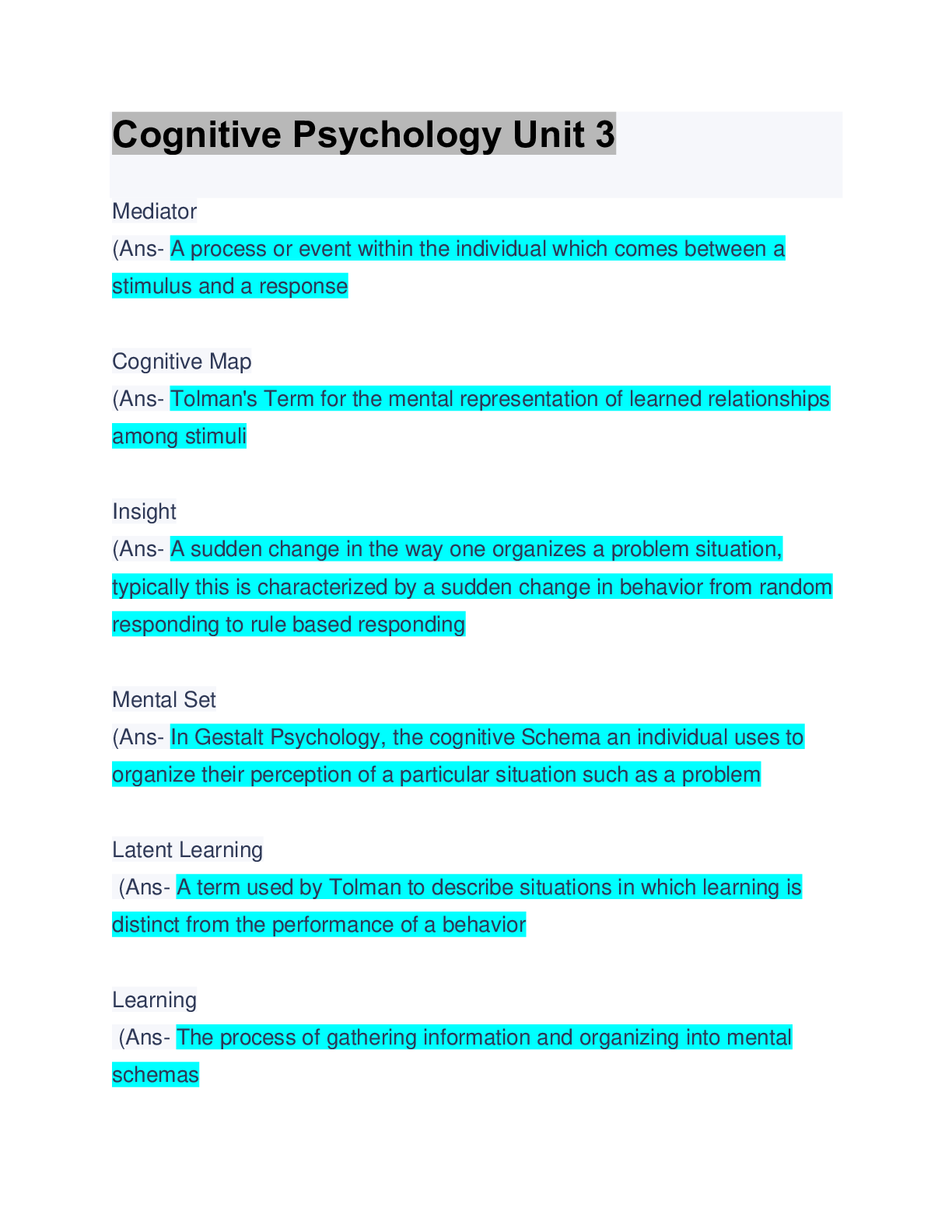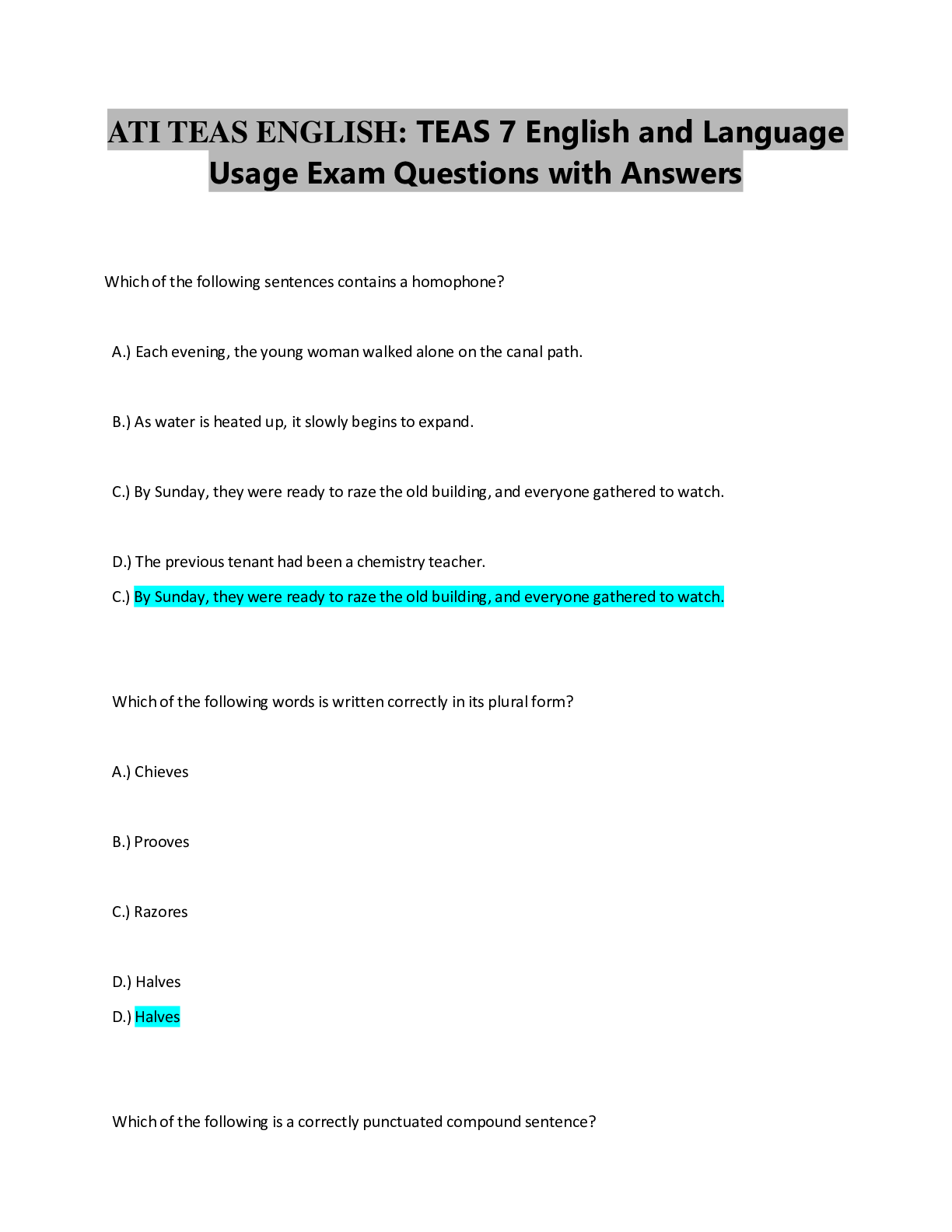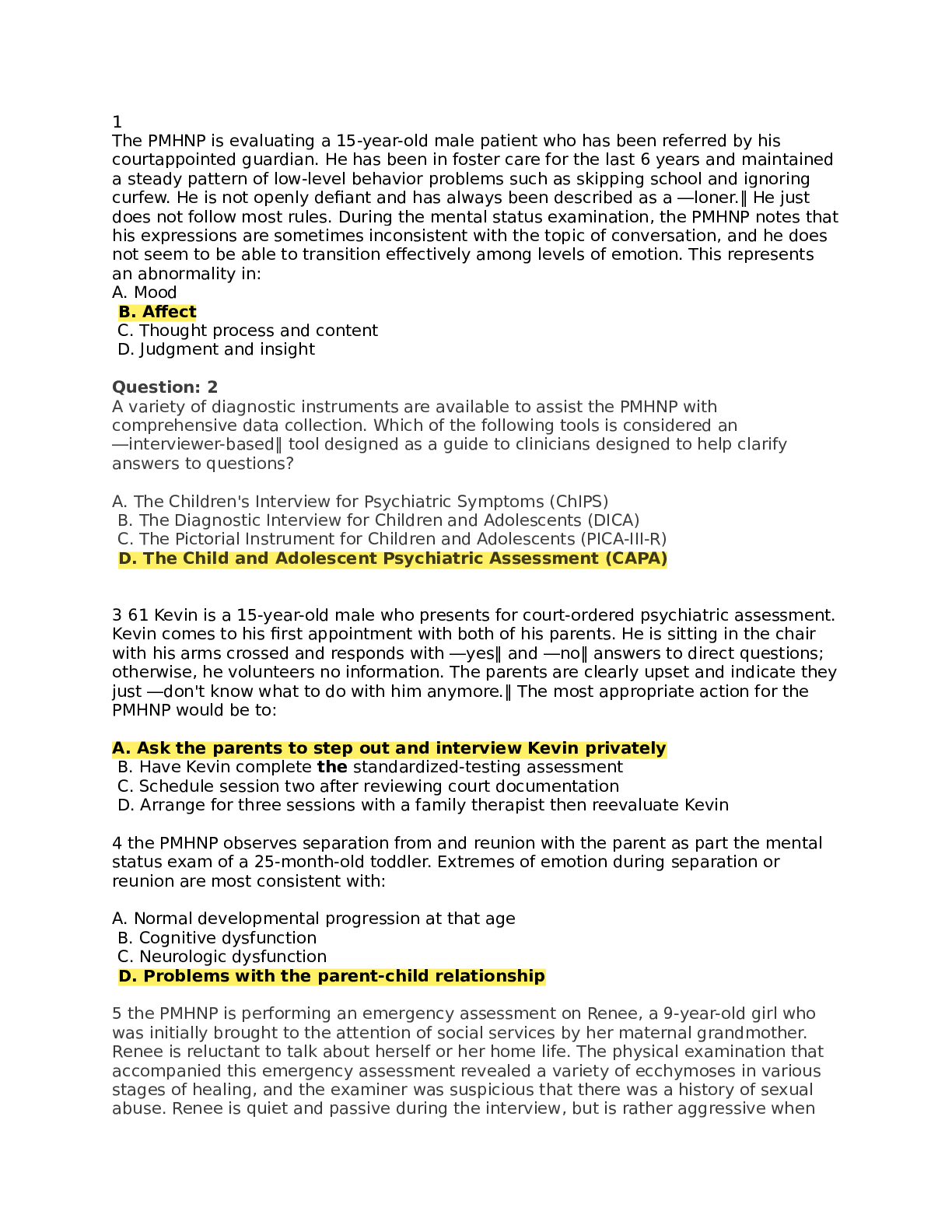Engineering > EXAM > ASE B5 Mechanical/Electrical Exam: 100% Verified Questions & Answers (All)
ASE B5 Mechanical/Electrical Exam: 100% Verified Questions & Answers
Document Content and Description Below
Deactivating restraint systems requires how long a waiting period before repairs can proceed? A. 60 seconds B. 30 minutes C. 3 hours D. time listed in repair manual (Ans- D. time listed in repai... r manual 30 minutes is the average time, but this may vary so always consult the service manual. Technician A says that while salvage airbags can be used, new OEM parts are preferred. Technician B says that salvage parts must never be used in the airbag system. Who is right? A, B, Both or Neither (Ans- Technician B only Salvage parts should never be used to repair an airbag system. Technician A says that all seat belts must be replaced after an accident. Technician B says some manufacturers require that belts be replaced if they were used in an accident. Who is right? A, B, Both or Neither (Ans- Technician B only Many manufacturers now require seat belts be replaced if they were in use during a collision. A front wheel drive vehicle was damaged in a collision, the right front wheel taking most of the impact. The estimate lists the replacement of the tire, wheel, steering knuckle and subframe. Technician A says the outer CV-joint should not be replaced because of the boot is not ripped. Technician B says the condition of the boot is not an indication of damage to the CV-joint. Who is right? A, B, Both, or Neither (Ans- Technician B only While a torn boot would indicate possible damage due to lack of lubrication of a CV-joint, it does not necessarily mean the joint is damaged by way of impact. The criteria for replacing a CV-joint would include obvious physical damage, such as broken parts, introduction of foreign matter into the joint itself, damage to the splines and excessive runout. Technician A says the half shafts must be replaced if there is noticeable runout. Technician B says they can be straightened on the frame machine. Who is right? A, B, Both, or Neither (Ans- Technician A only While half shafts can be straightened with special equipment, this work is not done in collision shops. Involved in a front end collision, a late model unibody sedan sustained structural damage. No suspension damage was noted. The repair estimate noted a repair to these structural members. Technician A says a suspension alignment should be done. Technician B says the damage did not affect the steering suspension, and would not require a wheel alignment check. Who is right? A, B, Both, or Neither (Ans- Technician A only Any structural damage to a vehicle of unibody construction would indicate the need for a suspension alignment check. As suspension members mount to the unibody structure, any dimensional should be followed by checking the alignment, This also serves as a quality control for the structural repairs. Tires are worn on the outside of the tread , and have a feathered feel. What is the MOST likely condition? A. too much negative camber B. too much positive caster C. too much fast driving D. too much toe-in (Ans- D. too much toe-in [Show More]
Last updated: 8 months ago
Preview 5 out of 28 pages

Loading document previews ...
Buy this document to get the full access instantly
Instant Download Access after purchase
Buy NowInstant download
We Accept:

Reviews( 0 )
$7.50
Can't find what you want? Try our AI powered Search
Document information
Connected school, study & course
About the document
Uploaded On
Oct 10, 2024
Number of pages
28
Written in
Additional information
This document has been written for:
Uploaded
Oct 10, 2024
Downloads
0
Views
18

















.png)

 (1).png)
 (1).png)
.png)
.png)



